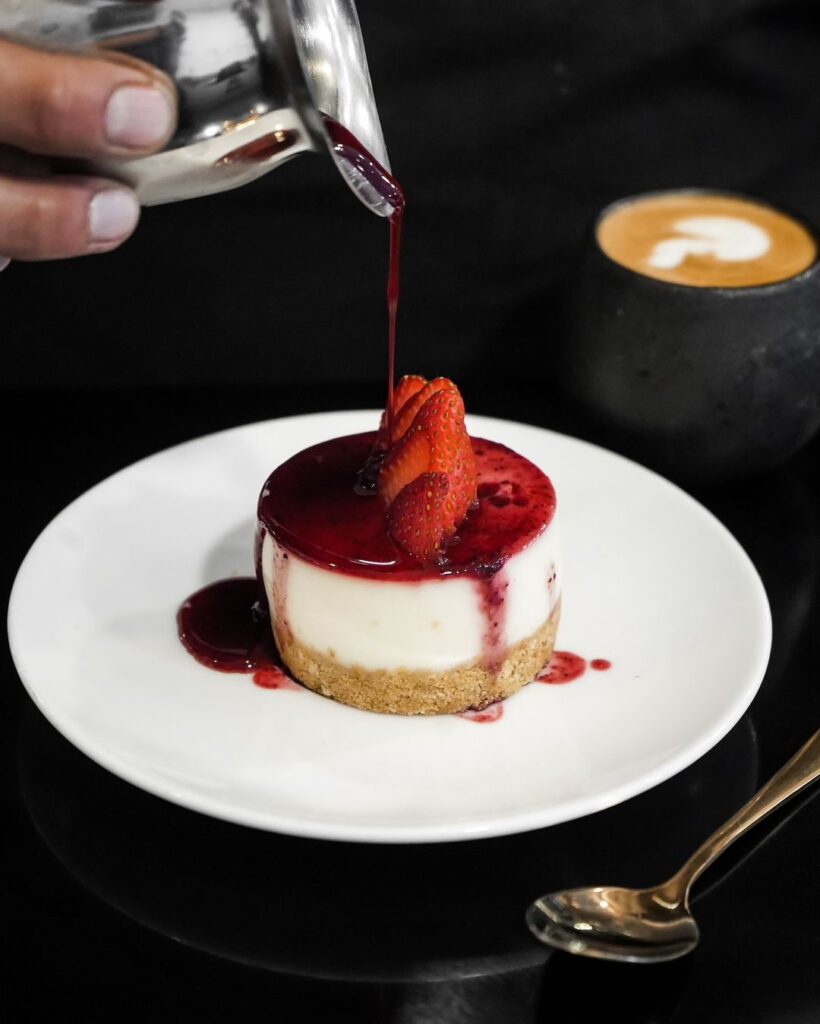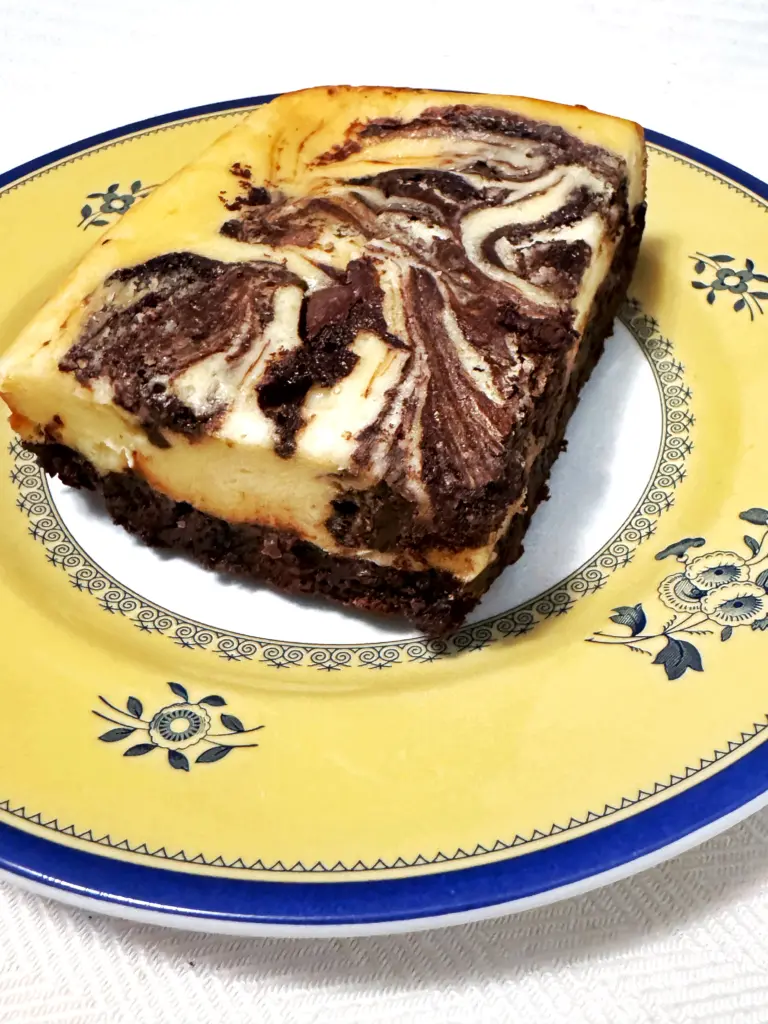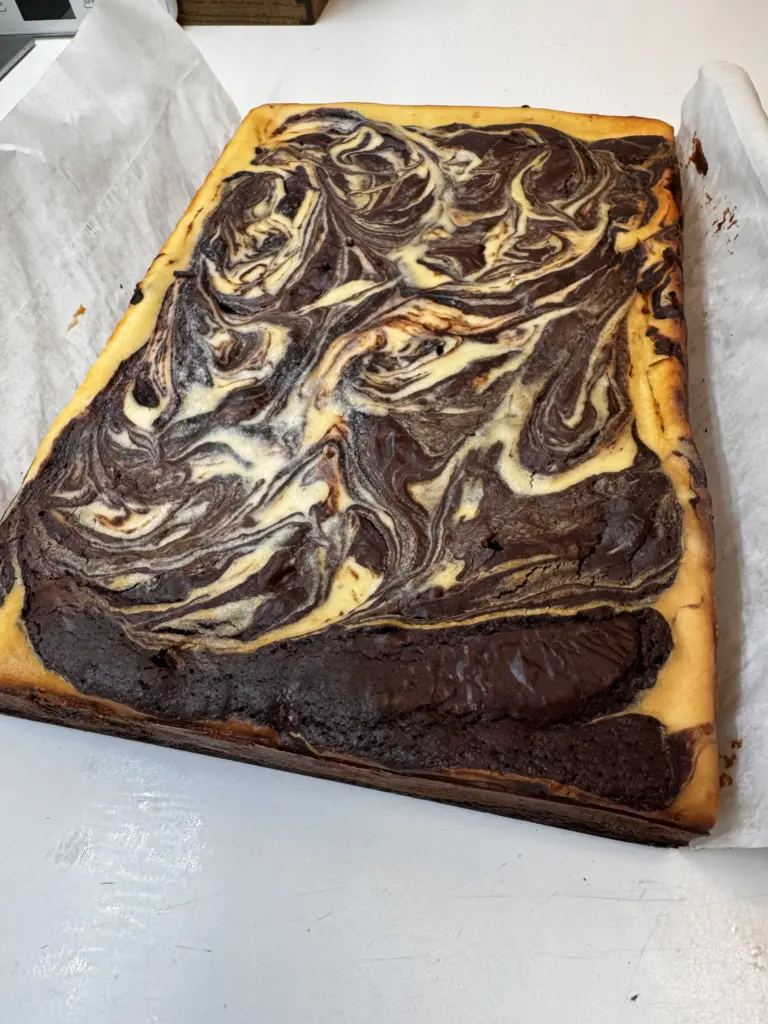This past June teams from six countries – Mexico, Paraguay, Colombia, Chile, Argentina, and Canada competed at the Americas Continental Selection in New Orleans for a spot at next January’s Coupe du Monde de la Pâtisserie in Lyon, France.
Each team had to create three tastings – a frozen dessert, a pastry creation, and a restaurant-style dessert. In addition, they also had to present two centerpieces, one made from chocolate and one made from sugar.

Although each country could choose their own theme for their tastings and centerpieces, the pastry creation had to reflect something indigidious to that host country and for the Americas Selection that was cheesecake.
Prior to the Americas Selection, we wrote about the history of the cheesecake.
What exactly is a cheesecake? Cheesecake is a type of dessert – a baked custard – characterized by a rich and creamy filling, usually made with cream cheese, eggs, sugar, and flavorings, such as vanilla or lemon juice, set on a crust, often made from crushed cookies or graham crackers, and typically baked. Cheesecakes can vary in texture from light and fluffy to dense and creamy, depending on the ingredients and baking methods used. They can also feature a variety of toppings, including fruit compotes, chocolate ganache, or whipped cream.

Currently, cheesecake is savored in numerous variations and flavors globally. Alongside the renowned New York-style and Philadelphia-style cheesecakes, various adaptations from different cultural backgrounds have garnered significant recognition.
- Chicago Style Cheesecake: This version is known for its tall and dense texture, often incorporating sour cream or heavy cream into the filling. It may also have a thicker crust than other types of cheesecake.
- Italian Style Cheesecake: Italian cheesecake often uses ricotta cheese as the main ingredient, resulting in a lighter and fluffier texture compared to other cheesecakes. It may also contain citrus zest or liqueur for flavoring.
- French Style Cheesecake: (Fiadone) Also known as a no-bake cheesecake, the French style cheesecake is made without eggs and is set using gelatin or another thickening agent. It tends to have a lighter and smoother texture.
- Japanese Style Cheesecake: Japanese cheesecake, also known as cotton cheesecake, is characterized by its fluffy and light texture. It uses a combination of cream cheese, eggs, and whipped egg whites to achieve its airy consistency.
- Chocolate Cheesecake: Chocolate cheesecake incorporates chocolate into the filling, either through cocoa powder, melted chocolate, or chocolate chips. It can have a rich and indulgent flavor, often topped with chocolate ganache or whipped cream.
- Fruit-flavored Cheesecake: These cheesecakes feature various fruits mixed into the filling or layered on top. Common fruit flavors include strawberry, blueberry, raspberry, and mango, among others.
- Marble Cheesecake: Marble cheesecake combines regular cheesecake batter with a chocolate or fruit-flavored batter, creating a swirled or marbled appearance.
- Basque Cheesecake: This cheesecake from Spain (and popular in France) is the alter ego to the classic New York–style cheesecake with a press-in cookie crust. It is a crustless custard-like cheesecake with a caramelized top that is burnt, cracked, and cooked at high heat.
- German Cheesecake – Also known as Käsekuchen it involves separating the eggs and folding whipped egg whites into the batter, which results in a lighter, fluffier texture compared to American cheesecake recipes. Quark is also the base cheese. It is similar to whole milk ricotta.
- Swedish Cheesecake (Ostkaka) – According to Spatuladesserts.com, to make an authentic Swedish cheesecake (first made in the 16th century) you’ll have to go and buy some rennet and make milk curds from scratch. But thankfully, modern Swedish cheesecake recipes use cottage cheese instead. Furthermore, there is no crumb base, and usually some kind of flour for added structure. So a Swedish cheesecake is very different from classic cheesecake recipes. As they are less sweet, you’ll usually find them topped with fresh fruit or preserves depending on the season.
- Russian Cheesecake (Vatrushka) – Russian cheesecake offers a distinct taste and texture compared to the familiar classic cheesecake varieties. It’s a baked cheesecake crafted from farmer’s cheese (pressed curds), cream of wheat, eggs, yogurt, and raisins, and notably lacks a base. Typically enjoyed for breakfast or as an afternoon treat. Raisins or other dried fruits like apricots or candied orange peel enhance its sweetness, as it traditionally contains minimal sugar.
- Polish Cheesecake (Sernik) – This is the most versatile of the group because there are no fixed parameters here — it can be crustless, have a bottom crust, or a bottom and top crust; anything goes. The crust, when there is one, is typically crumbly or made with shortcrust pastry. The cheese of choice is twaróg, a Polish cow’s milk cheese similar to ricotta, curd cheese, or farmer’s cheese. It is typically mixed with eggs, sugar, butter, some thickener, and traditionally, raisins, although they may be skipped completely.
- Austria Cheesecake (Topfentorte) – Topfentorte is an Austrian-style cheesecake made with topfen or quark cheese (see German Cheesecake) as the main ingredient. Apart from topfen, the cake is made with eggs, sugar, flour, lemon juice and zest, whipping cream, and gelatin. The tangy topfen filling is typically sandwiched between two layers of sponge cake.
- Norway Cheesecake (Brunost ostekake) – Brunost ostekake is a traditional Norwegian cheesecake made with Brunost brown cheese. Other common ingredients for the cake include digestive cookies or graham crackers, butter, cream, eggs, cream cheese, sugar, and vanilla. The cookies or crackers are crushed and mixed with melted butter, and the mixture is then tipped and leveled on the bottom of a springform tin.
We have made many cheesecakes and … quite frankly … we loved them all. However, on National Cheesecake Day (30 July), we decided to celebrate it a little differently – with cheesecake brownies.

Here you get to enjoy two beloved desserts – cheesecake and chocolate brownies without fussing with a water bath. This slightly modified recipe by Charlotte Rutledge is from our favorite flour company – King Arthur Baking Company. We tweaked it ever so slightly because we didn’t want to mess with a good thing. We used Valrhona cocoa powder and Manjari 64% chocolate, as well as double the amount of vanilla. For the chocolate brownie batter we used Nielsen-Massey Ugandan Vanilla Extract and for the cheesecake mixture we used Nielsen-Massey Madagascar Vanilla Extract. (Both are companies are sponsors of Pastry Team USA).